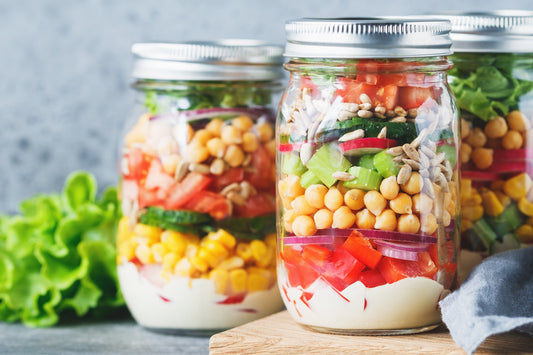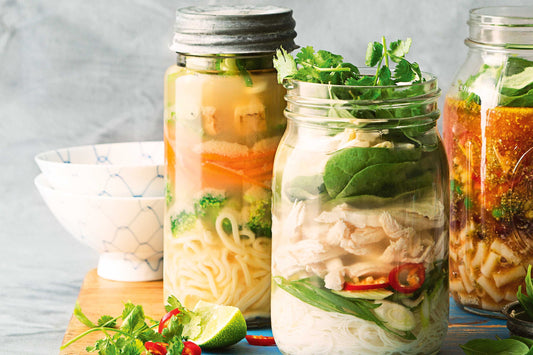When it comes to smoking meat, the choice of wrapping material can significantly impact the outcome of your culinary efforts. Butcher paper and aluminum foil are two popular options, each with unique benefits and drawbacks. This comprehensive guide will delve into butcher paper vs foil, helping you make an informed decision based on the type of meat and the results you aim to achieve.
Aluminum Foil Overview
Aluminum Foil Pros
- Seals in Moisture: Aluminum foil creates a tight seal around the meat, which locks in moisture and prevents it from drying out during the smoking process. This is particularly beneficial for leaner cuts of meat that are prone to becoming dry.
- Heat Conductivity: Foil is an excellent conductor of heat, which helps to cook the meat evenly and quickly. This can be advantageous for reducing overall cooking times.
- Versatility: Aluminum foil is highly versatile. It can be used for wrapping, tenting, lining cooking surfaces, and even creating makeshift pans or trays.
- Availability: Aluminum foil is widely available and commonly found in most kitchens, making it a convenient option for many cooks.
- Ease of Use: Foil is easy to wrap around various shapes and sizes of meat, and it can be molded to fit snugly, ensuring a tight seal.

Aluminum Foil Cons
- Soggy Bark: One of the main drawbacks of using foil is that it can cause the bark (the flavorful outer crust) on smoked meat to become soft and soggy. This is because the tight seal traps steam inside.
- Limited Smoke Penetration: Foil prevents smoke from reaching the meat, which can reduce the smoky flavor that many barbecue enthusiasts seek.
- Potential for Overcooking: Due to its efficient heat conductivity, foil can sometimes lead to overcooking if not monitored carefully. The meat may cook faster than expected, potentially leading to a dry or overdone product.
Butcher Paper Overview
Butcher Paper Pros
- Breathability: Butcher paper is breathable, allowing smoke to penetrate the meat and enhance its flavor. This is particularly beneficial for achieving a rich, smoky taste.
- Crispy Bark: The paper helps maintain a crispy bark, which is a highly desirable feature in many smoked meats. The bark forms a flavorful crust that adds texture and depth to the meat.
- Moisture Retention: While butcher paper allows smoke in, it also retains enough moisture to keep the meat tender and juicy without becoming overly soggy.
- Heat Resistance: Butcher paper can withstand high temperatures without burning or disintegrating, making it suitable for prolonged smoking sessions.
- Aesthetic Appeal: Butcher paper provides a rustic and authentic look, often preferred in barbecue presentations. It adds a visual appeal that enhances the overall dining experience.

Butcher Paper Cons
- Longer Cooking Time: Because butcher paper doesn’t conduct heat as efficiently as foil, cooking times can be longer. This requires patience and careful monitoring.
- Availability: High-quality, food-grade butcher paper may not be as readily available as aluminum foil. It may require a special trip to a specialty store or an online purchase.
- Learning Curve: Wrapping meat in butcher paper can be more challenging and may require practice to master. Ensuring a tight wrap that holds up during smoking can take some trial and error.
Are You Reaching For The Butcher Paper Or The Aluminum Foil?
Choosing between butcher paper and aluminum foil depends largely on the type of meat you’re smoking and the results you want to achieve. Here’s a more detailed look at which material is best for different types of meat.
Butcher Paper Vs Foil For Different Types of Meat
Brisket
- Butcher Paper: You should consider using butcher paper when you smoke a brisket at home without any time constraints. For the duration of the smoke, it keeps its gorgeous bark and permits the meat to absorb the delicious flavor of the smoke. Butcher paper also helps avoid the "pot roast" effect that can occur with foil-wrapped brisket.
- Aluminum Foil: If you are cooking for a crowd, catering, or even sometimes in competition, you should consider aluminum foil, A.K.A. “The Texas Crutch”. Foil can speed up the cooking process and ensure the meat stays juicy. However, it can soften the bark and reduce the smoky flavor. Foil-wrapped brisket may also cook more evenly and finish faster, which can be useful in competitive cooking environments.
Pork Ribs
- Aluminum Foil: Effective for keeping ribs moist and tender. The foil-wrapped method (often called the 3-2-1 method) involves wrapping ribs in foil for part of the cooking time to prevent them from drying out. This method can produce very tender ribs, though the bark may not be as crisp as with butcher paper.
Pork Shoulder
- Aluminum Foil: Aluminum foil can keep an even temperature. You should not wrap the pork butt directly in foil, and instead, wrap it inside of a metal tray. Add apple juice and butter to the bottom of the aluminum tray, the steam that is created and captured by the aluminum foil infuses the pork with extra succulent flavor.
Beef Ribs
- Butcher Paper: Helps beef ribs retain their juicy texture while developing a flavorful bark. The paper allows smoke to enhance the meat's natural flavors, resulting in a rich, deep taste.

Butcher Paper Vs Foil Frequently Asked Questions
Is Butcher Paper Better Than Aluminum Foil?
Both materials have their own advantages and are better suited for different purposes. Butcher paper is excellent for achieving a smoky flavor and crispy bark, while aluminum foil is better for sealing in moisture and speeding up the cooking process. The choice depends on your specific needs and preferences. For example, if you’re aiming for a tender, juicy brisket with a rich bark, butcher paper might be your best bet. On the other hand, if you’re short on time and need to ensure your meat stays moist, foil could be the better option.
Can I Substitute Foil For Butcher Paper?
Yes, you can substitute foil for butcher paper if needed. However, be aware of the differences in cooking outcomes. Foil will retain more moisture and cook the meat faster, but may soften the bark and reduce smoke penetration. If you decide to use foil in place of butcher paper, consider unwrapping the meat for the final portion of the cooking process to allow the bark to firm up and the smoke to enhance the flavor.
Conclusion
Choosing between butcher paper and aluminum foil for smoking meat is a matter of personal preference and the specific results you want to achieve. Butcher paper is ideal for enhancing smoky flavors and maintaining a crispy bark, while aluminum foil is great for sealing in moisture and speeding up the cooking process. By understanding the pros and cons of each material and considering the type of meat you're smoking, you can make an informed decision and elevate your smoking game, ensuring delicious, perfectly cooked meat every time.
Whether you’re a seasoned pitmaster or a novice barbecue enthusiast, experimenting with both butcher paper and aluminum foil can help you discover your preferred method. Each material offers unique benefits that can enhance different aspects of your smoking experience. Happy smoking!









